Vegetable container gardening – how to grow edible plants in garden pots
We get the lowdown on vegetable container gardening for beginners, so you can grow an edible kitchen garden in pots, planters and more
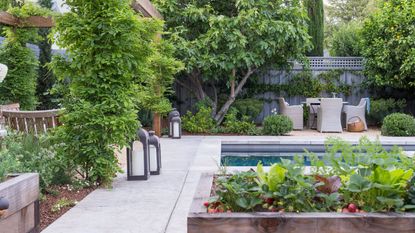

Vegetable container gardening means growing your own isn't impossible if you have a small garden, offering you an opportunity to harvest edible crops without the need for vast beds.
If you've ever dipped your toe into growing your own vegetables, it's likely to have been with a container crop, and you might have some clue how it can feel both incredibly rewarding, and sometimes frustrating. Yet, for beginners, taking the container gardening approach to growing vegetables might well yield your best results.
'Growing in containers means you can make sure you have the right soil for your crops and you are also unlikely to end up with a glut,' says gardening expert Sarah Raven. 'Being limited in size can help you think carefully about what you’d like to grow and eat.' Growing in pots also means you can move plants into the right conditions for them to grow to their full potential too.
A little self-dependence never hurt anyone either. 'We’ve been reminded how fragile our supply lines are in recent years,' says Christian Douglas, a California-based landscape designer who specializes in edible gardens. 'The need for growing more fresh produce throughout our neighborhoods and closer to home helps buffer the turbulence and uncertainty - while reducing our dependence on fossil fuels.'
You'll taste the difference too, Christian explains. 'The reason your carrots taste sweeter at home, is because flavor is directly related to nutrient content. With good gardening practices, rarely ever used in large-scale agriculture, your food will be more delicious and your body will thank you for it.'
If you're interested in taking up the vegetable container gardening challenge, here, the experts offer their top tips for establishing your edible gardening.
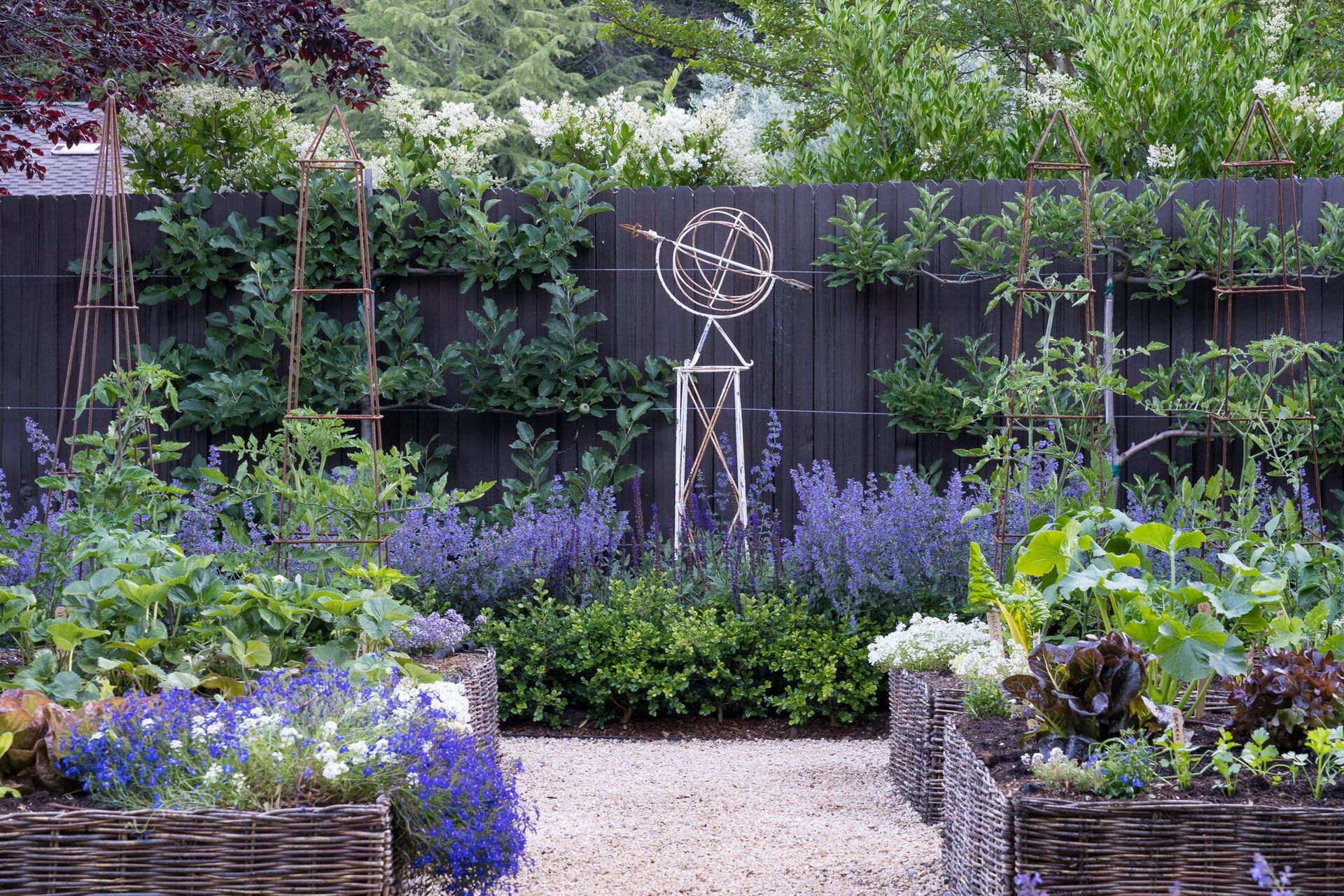
Raised beds are perfect for the larger fruits and vegetables. Providing space for more varieties and bigger harvests.
How do I start vegetable container gardening?
Certain vegetable crops suit beginner growers well. 'Edible plants vary in attention needs, much like our children,' Christian explains. 'They range from the “Toddlers” (select vegetables) to “Young Adults” (herbs).'
Once you decide on what you want to grow, it's important to get your set up right.
'Always start any growing endeavor with three simple ingredients,' suggests Christian Douglas. 'Healthy soil, regular water and plenty of sun.'
'The first step is to make sure you purchase high-quality organic potting composts,' he suggests. 'This will provide a solid base of energy that your plants will need to keep producing throughout the growing season. Adding drip irrigation is a wise addition so the responsibility is off of you to remember to water. Containers can dry out quickly, especially if they are small - sizing up is good if you have space.'
When growing vegetables, sun is an important factor too. 'Think of the leaves of your precious plants as mini solar panels,' Christian says, 'turning those UV rays into delicious food. Position the containers so they receive between 6-8hrs of direct sunlight, if you can.'
'You do need to keep on top of watering and feeding,' says Sarah Raven. 'We use a Liquid Seaweed Feed weekly and a potash-rich feed for fruiting tomatoes, Comfrey Pellets are ideal.'
What vegetables grow well in a containers?
The truth is, many container vegetable crops are relatively easy to grow. However, sometimes it's more about choosing plants that'll inspire you to carry on with your exploration of growing vegetables as part of your garden ideas, says Christian Douglas.
'We like to start people with those more fail-safe options first. It helps build confidence and still delivers the goods.'
Why not try one of these seven crops to start?
1. Leafy greens
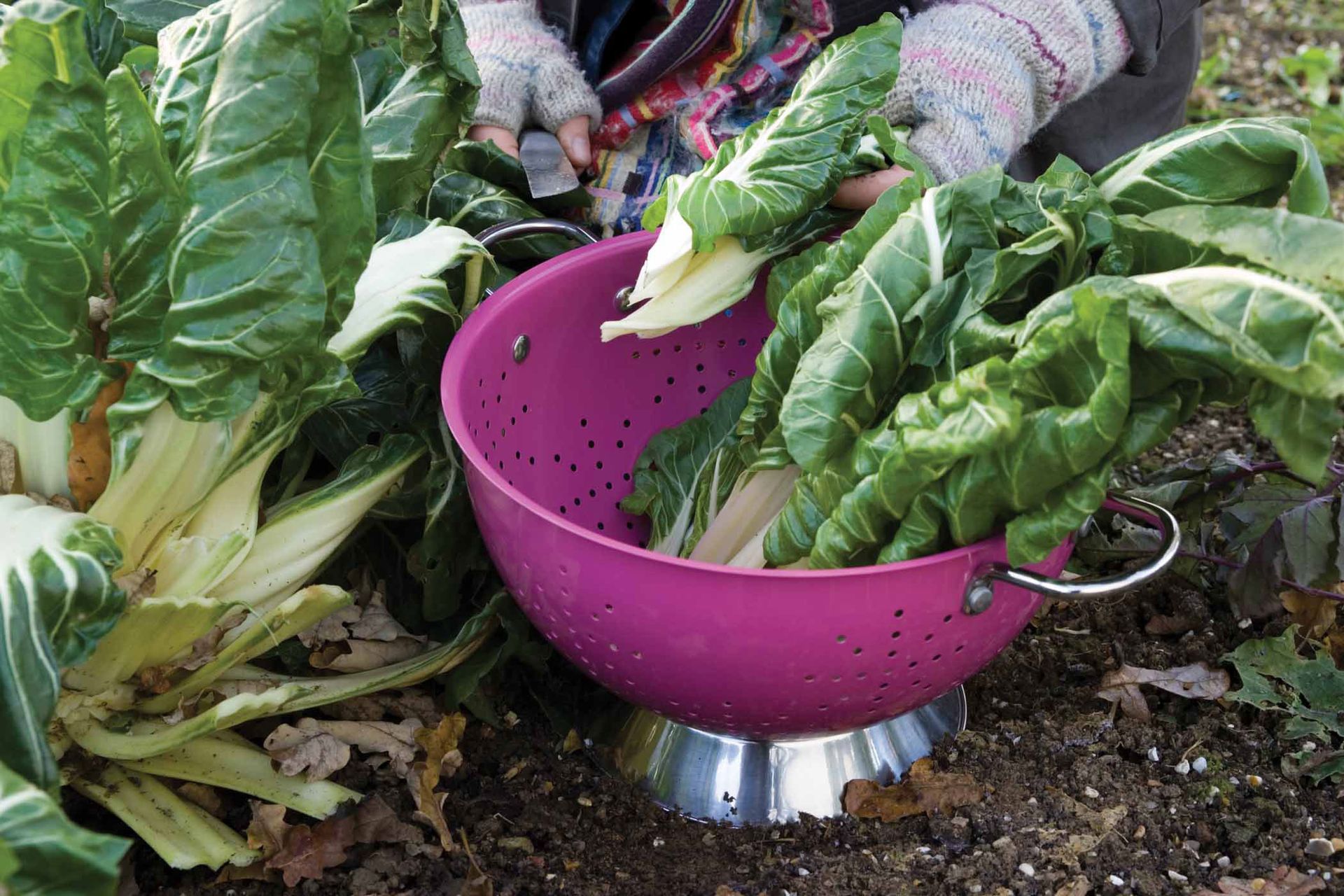
White silver chard from Sarah Raven.
'Any leafy green will do well in a pot, and can go from seed to harvest in 35 to 40 days during peak season,' says Christian. 'This would include, arugula, lettuce, kale, chard, bok choy. They germinate easily and you can literally watch them grow before your eyes.'
'To accelerate the process and feel even better about your speed-gardening skills, you can always buy a seeding (or “start") from a local nursery and you’ll bump that harvest time up by a week or two. The nice thing about leafy greens is most varieties will re-sprout once cut – giving you multiple harvests throughout the year with minimum effort.'
2. Zucchinis
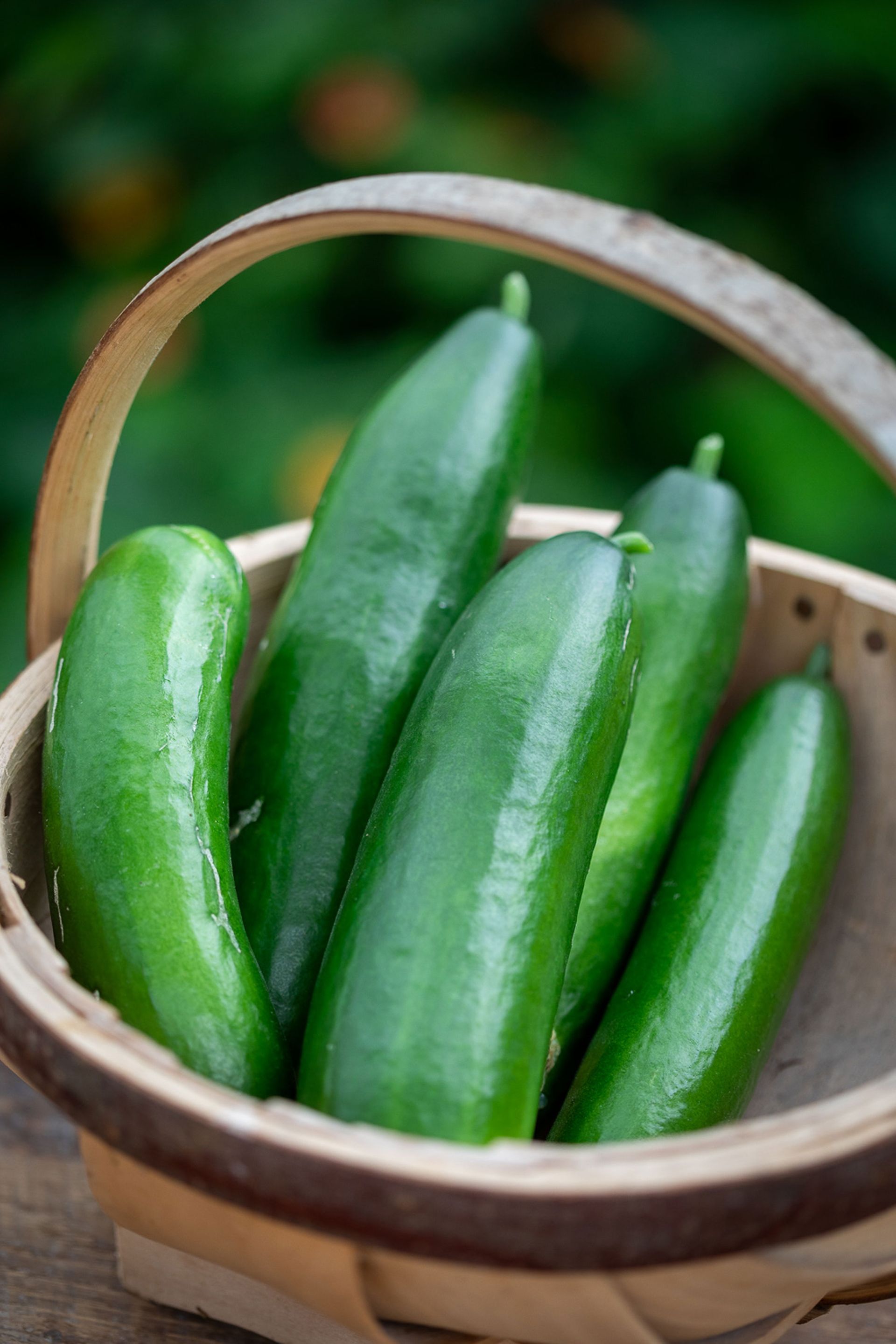
You can purchase a variety of courgette seeds from Sarah Raven.
Zucchinis (or courgettes) are an excellent crop for beginners. 'You can sow them now in May, either under cover with two seeds sowed vertically to a pot, or direct once the frosts have passed,' suggests Sarah Raven.
'The thing is not to grow too many and to grow not one, but several varieties. I try to grow at least one dark green 'Romanesco', a pale green 'Bianca di Trieste', which is early to crop and an excellent flower producer for stuffing, as well as a yellow 'Soleil’ and the climbing 'Tromboncino’, which will clamber over a fence or frame, so is an ideal urban gardening idea.'
3. Salad vegetables
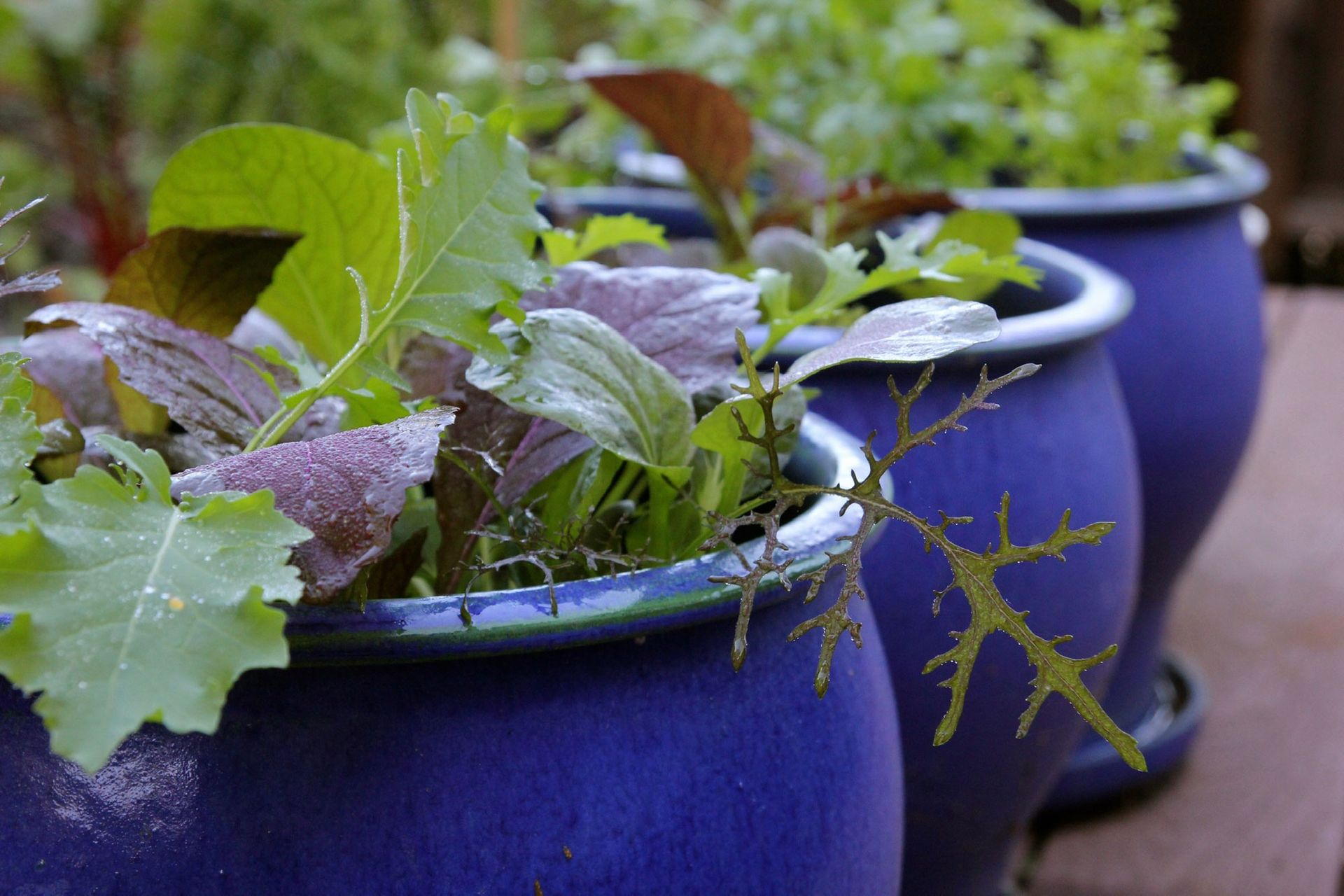
Accessorize your vegetables by planting in pots that add a pop of color. Crunchy leafy greens offer a pretty contrast to the azul glaze
Why not grow the ingredients for a salad in your container garden? ' For a good salad, follow my basic rule,' says Sarah Raven, 'by including at least one thing from five different categories of ingredients.'
'The first is lettuce to give a gentle flavour, crunch and background bulk to your bowl.' she suggests. 'Next come the salad leaves to provide strong taste and splashes of colour. The third addition is herbs, just a sprinkling, coarsely chopped or torn, to give a lovely hit of flavour. Then introduce one or two different salad vegetables like cherry tomatoes or cucumber to give substance and, finally, edible flowers like nasturtiums or violas for prettiness and colour.'
4. Radishes
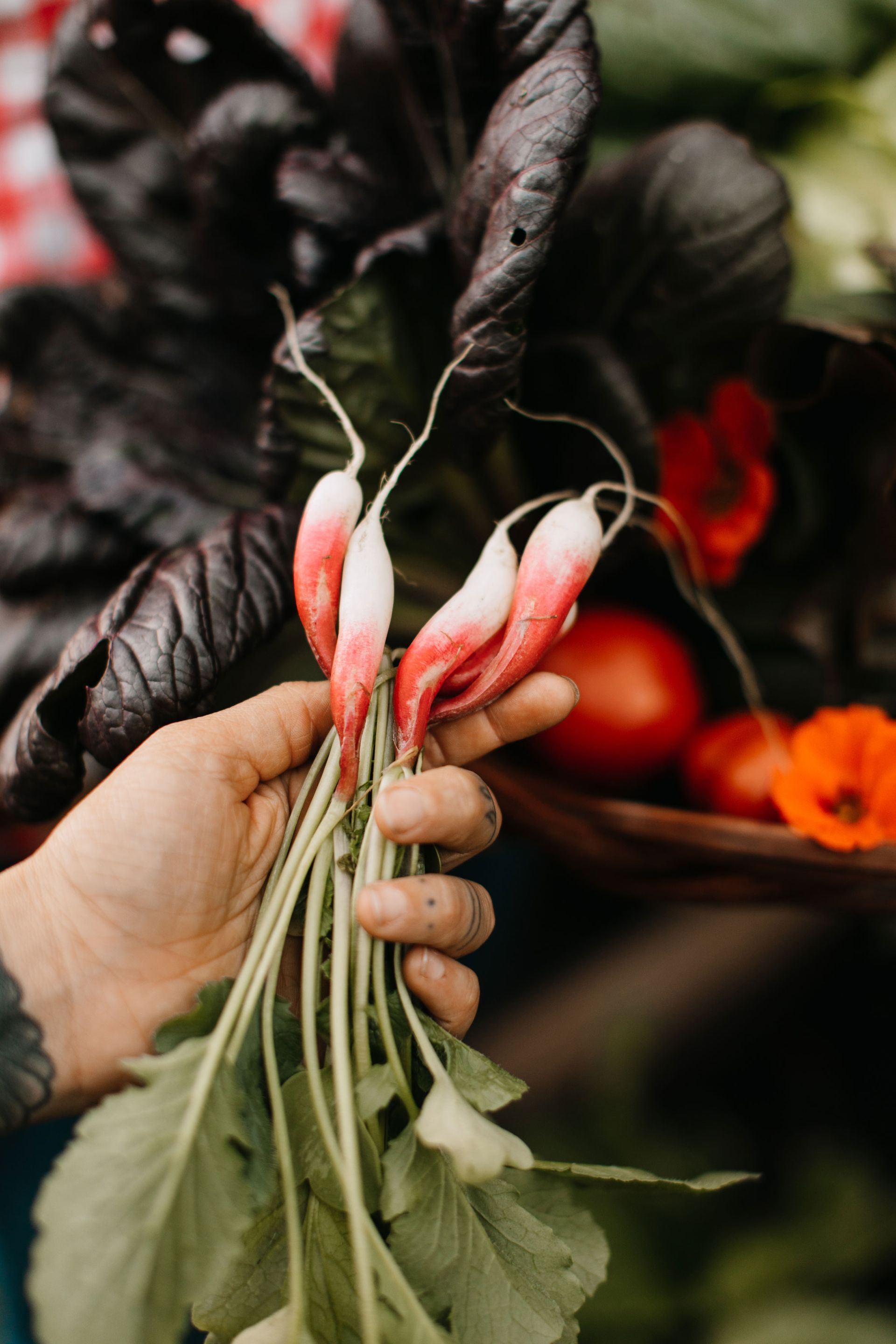
French breakfast Radish are a quick, rewarding win for anyone wanting to grow vegetables.
'After some early preparation, radishes can go from seed to harvest in under 40 days,' says Christian Douglas. 'They can be eaten raw or quick-pickled in red wine vinegar so you can keep fresh for longer.'
Should you wish, radishes are one of the vegetables you can grow indoors all year.
5. New potatoes
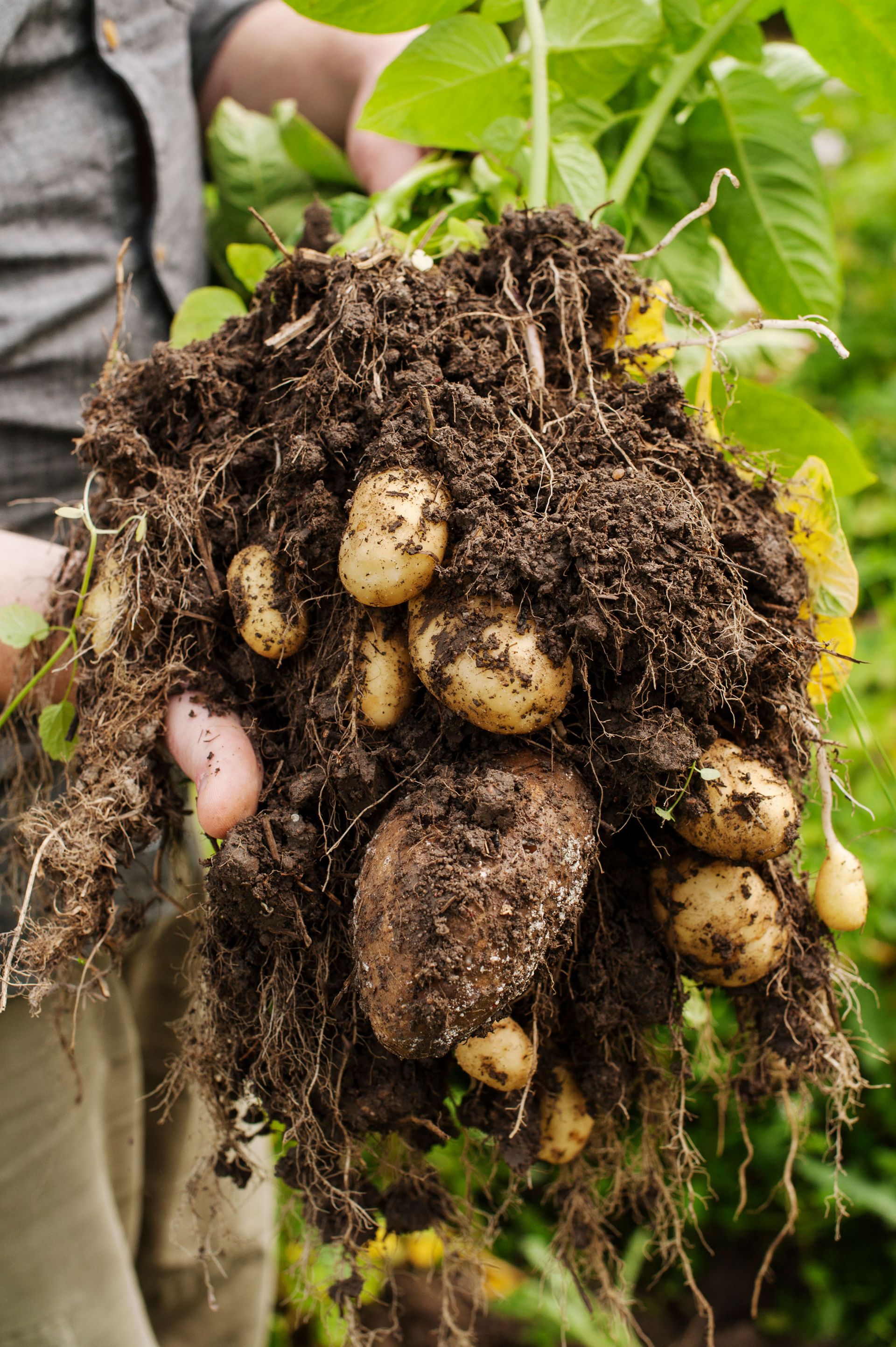
'New potatoes are also fun to grow in containers, especially if you are a beginner,' says Sarah Raven, 'for the tombola thing of picking out potatoes one after another – you can’t believe one tuber has turned into 20 potatoes.'
6. Garlic
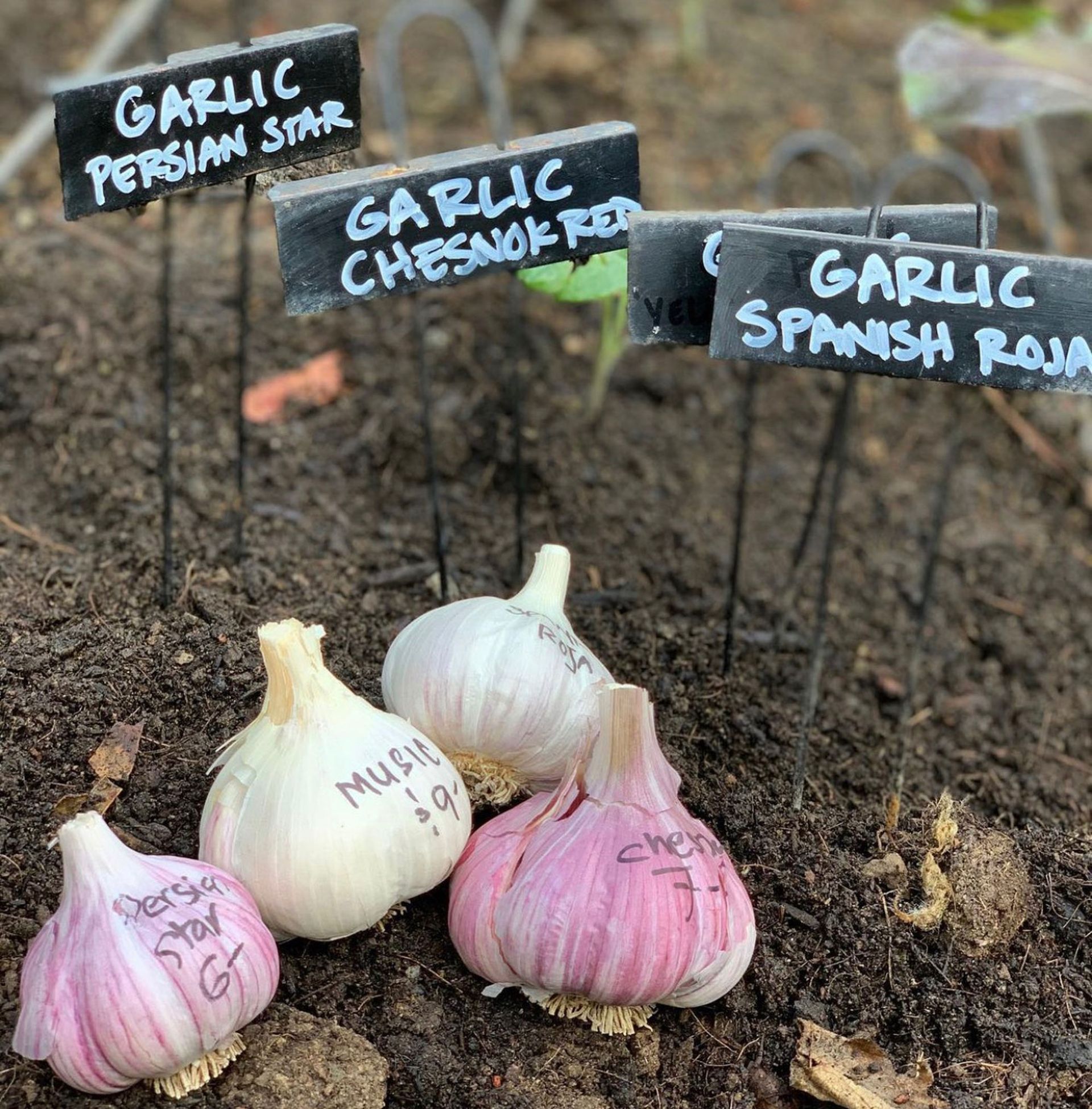
Garlic is a satisfying grow for your store cupboard, but won't give you instant results. 'Plug and play garlic has a nine-month gestation period,' explains Christian, ' and once in the ground, it needs little attention.'
'Harvest once you hit "full term" and then dry and store. It can be used for up to a year afterwards and comes in a surprisingly large array of sweet-to-spicy varieties.'
7. Herbs
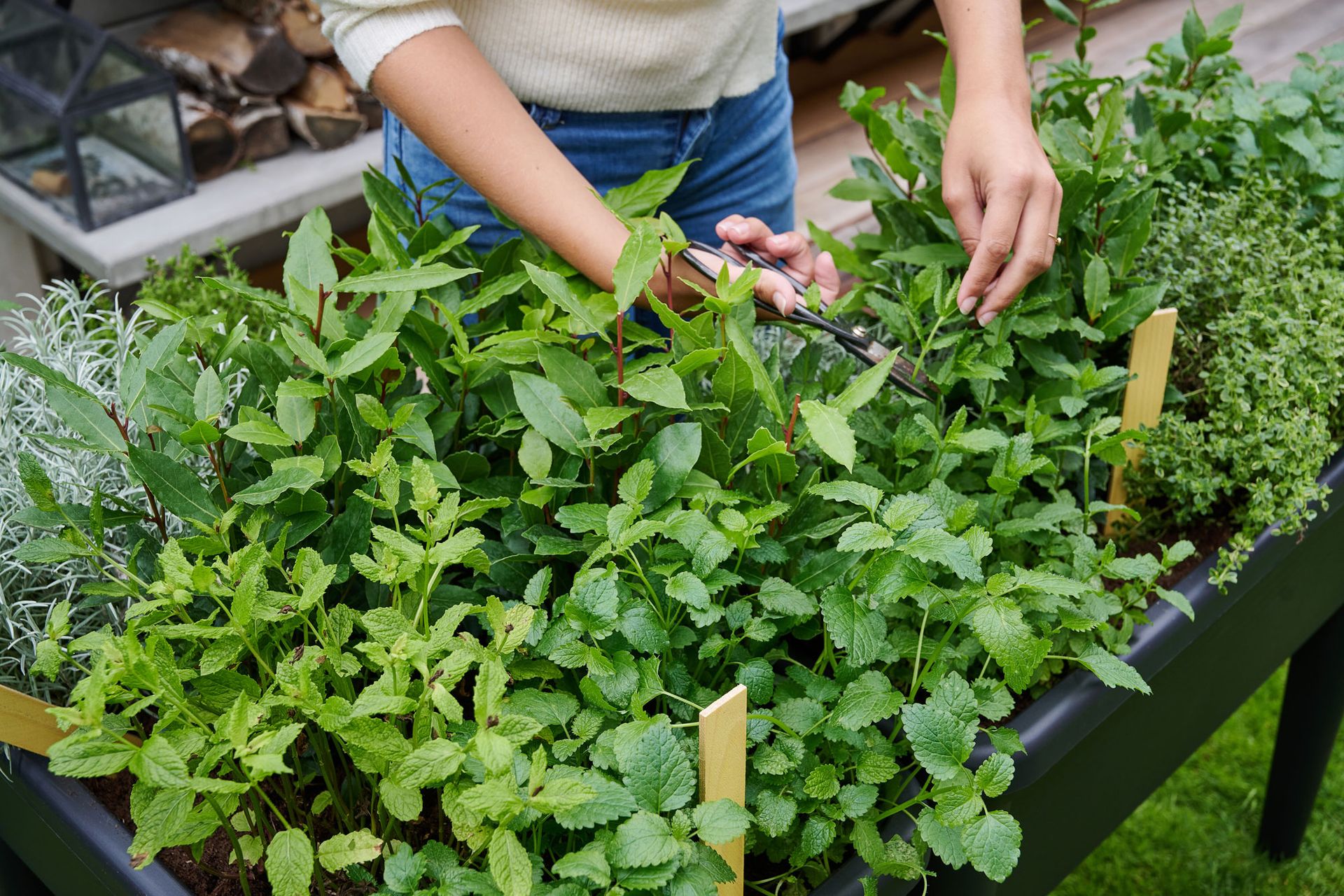
When it comes to growing an edible container garden, don't forget about herbs. They're a super accessible grow, and can even be included in super small pots and window boxes.
'Thyme, marjoram, oregano and rosemary are so simple to grow,' says Christian. 'Eaten either fresh or dried and stored for the winter months if you’re under snow during that time of the year. They can handle considerable neglect, which is appealing for most busy people.'
'Basil is another relatively easy one,' Christian adds. 'It produces mountains of leaves every few weeks. Excellent for those Caprese salads and batching pesto for use throughout the year.'
How big do planters need to be to grow vegetables?
Vegetable container gardening can be undertaken in even a small garden. 'Most veg can be grown successfully in pots as long as you get the right-sized container and ensure adequate drainage,' says Sarah Raven. 'We recommend a 30cm diameter pot, for herbs,' says Sarah Raven. 'A 40cm diameter is great for potatoes, tomatoes and courgettes.'
'If you are looking to grow larger crops, such as winter squash, asparagus, corn, it becomes a lot harder to have a meaningful harvest for all of the effort and care they need,' explains Christian. 'This is where larger vegetable beds shine. More space provides an opportunity for a more diverse, high-yielding garden.'
Be The First To Know
The Livingetc newsletter is your shortcut to the now and the next in home design. Subscribe today to receive a stunning free 200-page book of the best homes from around the world.

Hugh is the Editor of Livingetc.com. From working on a number of home, design and property publications and websites, including Grand Designs, ICON and specialist kitchen and bathroom magazines, Hugh has developed a passion for modern architecture, impactful interiors and green homes. Whether moonlighting as an interior decorator for private clients or renovating the Victorian terrace in Essex where he lives (DIYing as much of the work as possible), you’ll find that Hugh has an overarching fondness for luxurious minimalism, abstract shapes and all things beige. He’s just finished a kitchen and garden renovation, and has eyes set on a bathroom makeover for 2024.
-
 The 12 Best Table Lamps for Reading —I'm a Certified Bookworm (and Shopping Expert)
The 12 Best Table Lamps for Reading —I'm a Certified Bookworm (and Shopping Expert)When it comes to table lamps for reading, I don't mess around. If you're the same, this edit is for YOU (and your books, or course — and good recommendations?)
By Brigid Kennedy Published
-
 "It's Scandi Meets Californian-Cool" — The New Anthro Collab With Katie Hodges Hits Just the Right Style Note
"It's Scandi Meets Californian-Cool" — The New Anthro Collab With Katie Hodges Hits Just the Right Style NoteThe LA-based interior designer merges coastal cool with Scandinavian simplicity for a delightfully lived-in collection of elevated home furnishings
By Julia Demer Published

